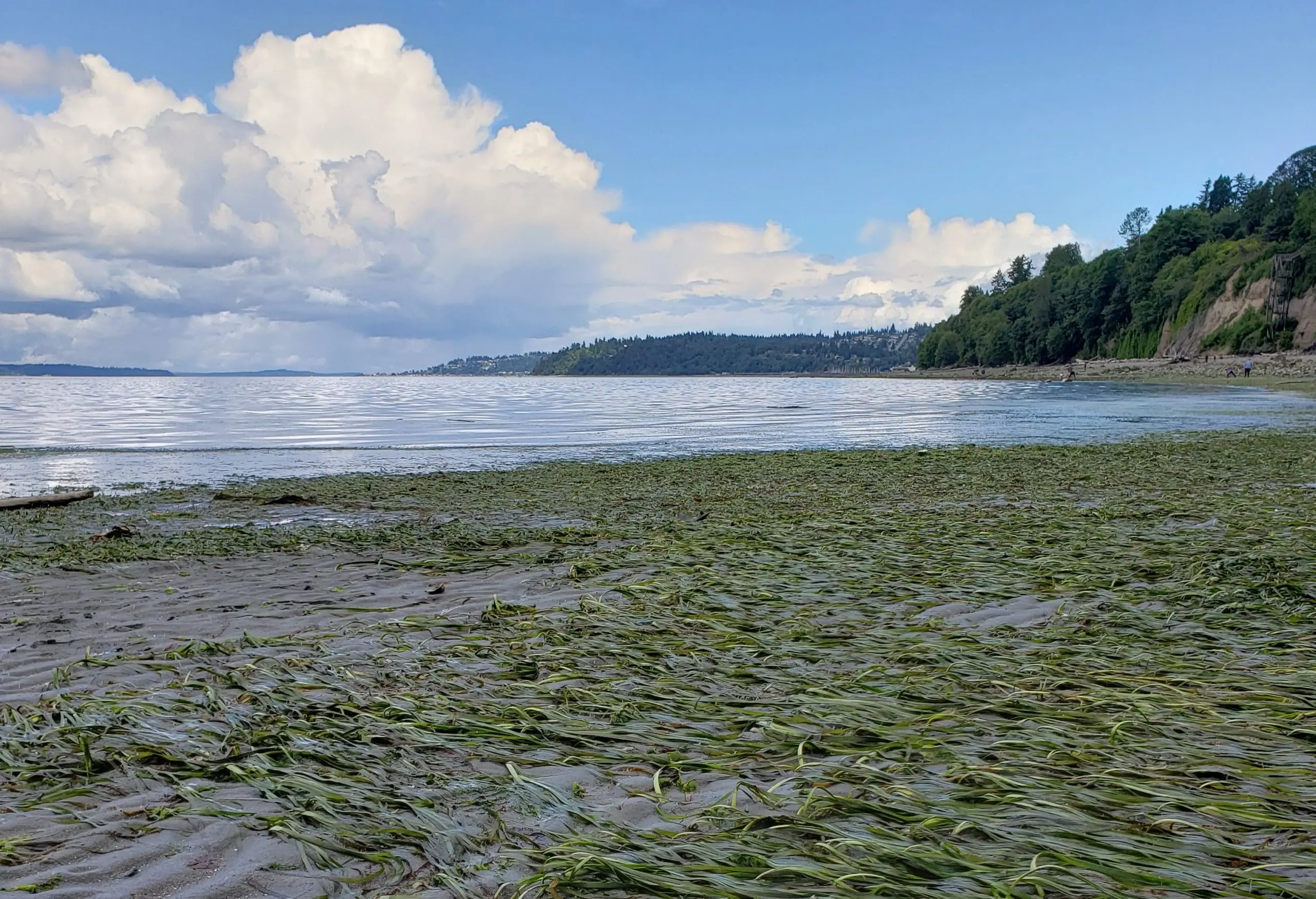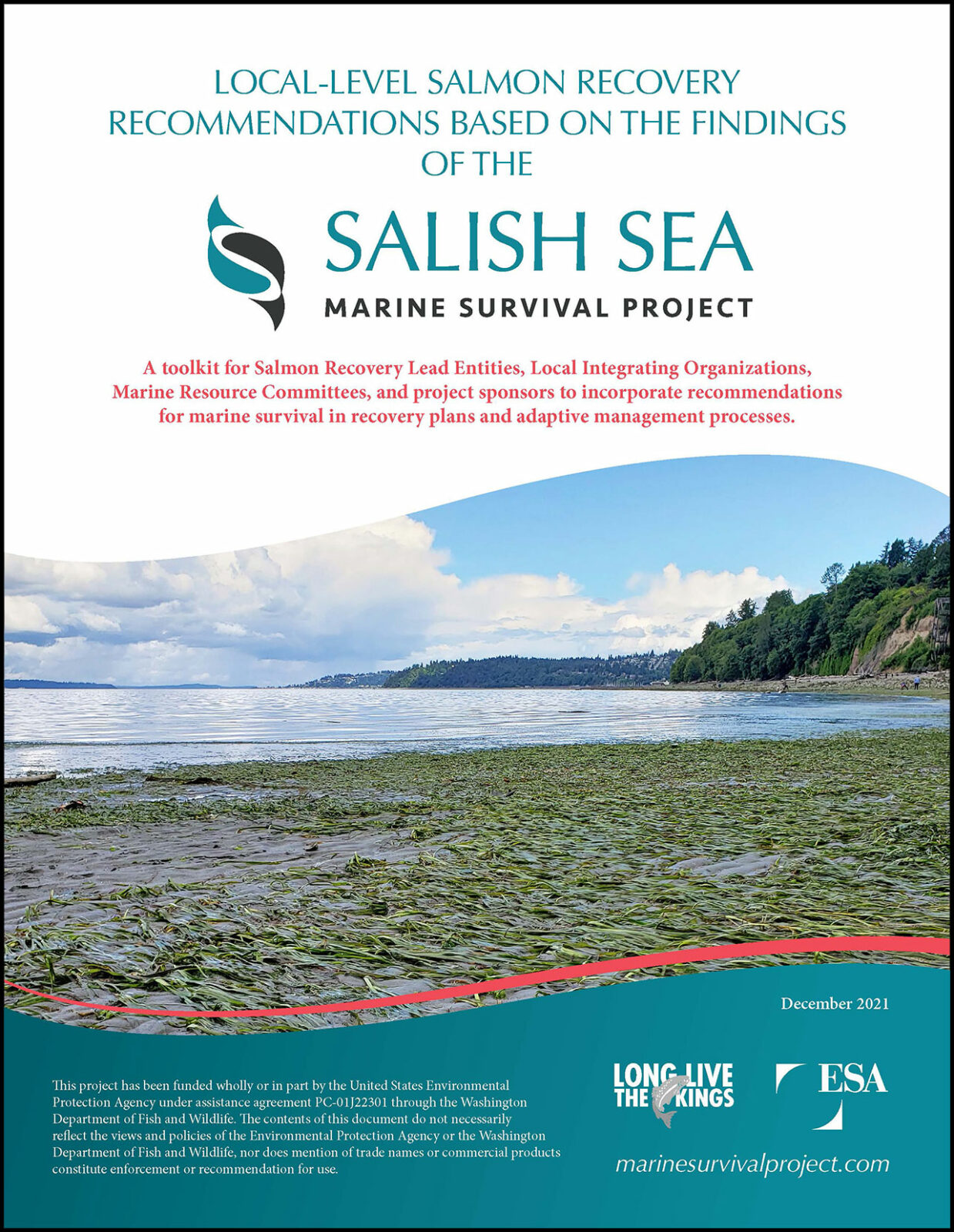
Ecosystem Solutions Made Local: Guidance Document for the Salish Sea Marine Survival Project
The 7-year active research phase of the Salish Sea Marine Survival Project may have concluded with last year’s publication of the Synthesis Report, but that doesn’t mean the work is finished. Learning what causes Salish Sea salmon to die at alarmingly high rates as they enter the marine environment is just the first step for the SSMSP partners. Our ultimate goal is also to equip managers and decision-makers with science-backed strategies to increase their survival.
In February 2022, we released Local Level Salmon Recovery Recommendations Based on the Findings of the Salish Sea Marine Survival Project, a guidance document for local salmon recovery organizations in the United States to put these findings into action. LLTK worked with salmon recovery experts at ESA to create this document, in consultation with local salmon recovery organizations and Tribes, as a toolkit to incorporate the SSMSP’s findings into watershed-level planning and projects. The actions target the issues that the SSMSP identified as key limiting factors for marine survival: local marine food supply and predation hotspots, along with strategies to address contaminants, restore estuaries, manage water quantity, and continue essential monitoring and data collection. In combination with regional-scale tools, including regional recovery plans and co-management processes, this resource provides local entities with a roadmap to support ecosystem-wide recovery in ways that best align with local conditions and goals.
Read on for more background about the Local Guidance Document and a link to the full story on ESA’s website:
Developing Local Solutions
ESA’s natural resource specialists have worked with salmon recovery lead entities and the Puget Sound Partnership to integrate adaptive management and updates into salmon recovery plans. With this understanding of fish recovery needs, the collaboration with Long Live the Kings was a natural fit.
The Local Guidance document builds on SSMSP recommendations and presents strategies and actions for local entities to apply at the local scale. It details how groups can address local impacts on marine survival rates by improving fish habitat conditions while limiting predation, enhancing food supplies, and partnering with fellow conservation efforts to accelerate estuary habitat restoration.
“The Salish Sea Marine Survival Project gave us clear evidence that environmental changes, from estuary and nearshore habitat loss to climate shifts, have impacted the entire Puget Sound food web in ways that are limiting the productivity, survival, and fitness of our juvenile salmon,” says Jacques White, Executive Director of Long Live the Kings. “This guidance document translates those findings into management and restoration actions. ESA had both the science and policy expertise that were essential to connect the research to concrete steps. We hope this toolkit provides a timely ecosystem perspective to equip local and regional salmon recovery efforts.”
“The breadth and depth of issues that salmon recovery groups are being asked to tackle continue to grow as we learn more about what it is going to take to recover these species,” notes Senior Conservation Planner Susan O’Neil, who guided the creation of the guidance document.
O’Neil explains that local recovery strategies will need to apply a holistic approach to address the complex interconnectedness of environmental factors that are contributing to the low Chinook, coho, and steelhead numbers in order to increase survival rates and meet recovery goals.
Read the full article on ESA’s website here.
Download the Local Guidance Document for U.S. Entities.
